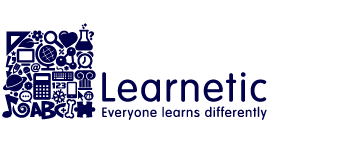Publishers’ economy – 9 reasons why digital solutions are more cost-effective than printed textbooks
Big data and satisfied customers
Education is entering the digital world with increasing vigor. Teachers are eager to use digital materials, schools are equipping themselves with interactive whiteboards and electronic equipment, and students are taking advantage of digital opportunities with curiosity and growing enthusiasm. Videos, graphics, interactive exercises and even entire courses supporting the educational process are being developed and can be provided to students by educational publishers. However, a question comes to mind, how much does the transformation to digital cost publishers who want to convert their analog textbooks to digital?
Initially, such a far-reaching change would seem to require a considerable investment. In this article, we will prove that the turn to digital is not only about keeping up with the times and a necessary transformation but also about pure savings and an investment that will soon more than pay for itself.
Why digital solutions for educational publishers?
There are many reasons for taking up the challenge of transforming from traditional education to digital. First of all, publishers using digital materials have a much more interesting teaching offer, more likely to be chosen by schools. It turns out that another reason to join the transformation is financial. Why are digital solutions more cost-effective than printed textbooks?
- Rising paper prices are making it increasingly expensive to print books. In addition, there is sometimes a need to change or add some information, so the publisher is forced to reprint the textbook and hit with high costs.
- By using the digital version of textbooks, publishers can create and sell different types of licenses, such as licenses for schools, for the individual user, temporary licenses and others.
- Digital materials can be easily divided. So, the offer can consist of whole textbooks and single batches of material, such as a section or subject block. Publishers can sell materials needed for the entire course of study of a particular subject or just a short set of exercises.
- Making digital textbooks changes is a much simpler process than you think. A few mouse clicks will suffice to get the job done. More so, it does not require reprinting the book. Therefore textbooks can be sold licensed for many years, thanks to the ability to make changes easily.
- The digital textbook can be very easily adapted to local customers’ needs and curricula’ needs and requirements. Digital materials can reach audiences worldwide, thanks to the ability to customize and change the language of the prepared content (even if the local alphabet of the recipient differs from the one used to write the texts).
- Digital materials are much faster and more convenient to distribute. Publishers no longer need to create a complicated supply chain or worry about logistical issues. Thus, they can save considerable financial resources that would have had to be paid for transporting textbooks to schools or bookstores. In times of rapidly increasing fuel prices, this is a critical argument. It is also a much faster method. The school no longer has to wait several days for the textbooks to arrive and receives them immediately after placing the order.
- Another thing that enables publishers to save money is that they don’t have to store vast amounts of waste paper. The possible costs are hosting fees. However, no risk would result in publishers being unable to sell and distribute all of the textbooks, which would cause them to linger in storage, resulting in a double loss (printing and storage costs).
- Digital materials enable the use of NFT and blockchain technology, which allows the same product to be sold multiple times and collect profit from it. In the case of paper textbooks, the publisher only charges once, while when students buy a book second-hand, the creators receive no profit from the transaction.
- Digital materials do not require as much human labor as analog textbooks. While this may seem surprising, just look at the points above. Digital textbooks do not need a printing company to produce them, a warehouse supervisor, a logistician to handle the transportation, or a driver to get the product to the customer. All that is needed to create digital materials is an excellent instructional design team that works with specialists in specific fields of study. However, it can take a long to conduct the recruitment process and find the right team. In addition, the publisher and their team need to consider which digital solutions will work best and how to transfer an analog textbook to the digital world so that it is as full of content as the paper version and will appeal even more to students. We encourage you to use Learnetic’s services to avoid this tedious and lengthy process. Our eContent packages are ready to use by publishers almost overnight. We are a company with a lot of experience creating digital educational materials. Our services are so comprehensive that every publisher will find something to aid in the digital transition.
Implement digital solutions and invest
There are many advantages to changing to digital – the ability to work from anywhere in the world, creative solutions using gamification or adaptive learning and turning to the needs of students. To these and many other advantages that digital solutions have in education, we add savings. An advantage that is undoubtedly very important nowadays, allowing you to invest the saved funds for further business development.
Bottom line, digital equals savings
Moving away from analog textbooks and replacing them with digital counterparts turns out to carry a number of financial benefits. If you have so far feared that the transformation to digital will require a huge amount of money and will be a misguided investment, we convince you that it is the exact opposite. We encourage you to delve into our wide range of ready-made, fully digital resources that will make it easier to abandon traditional textbooks and turn to modernity.





